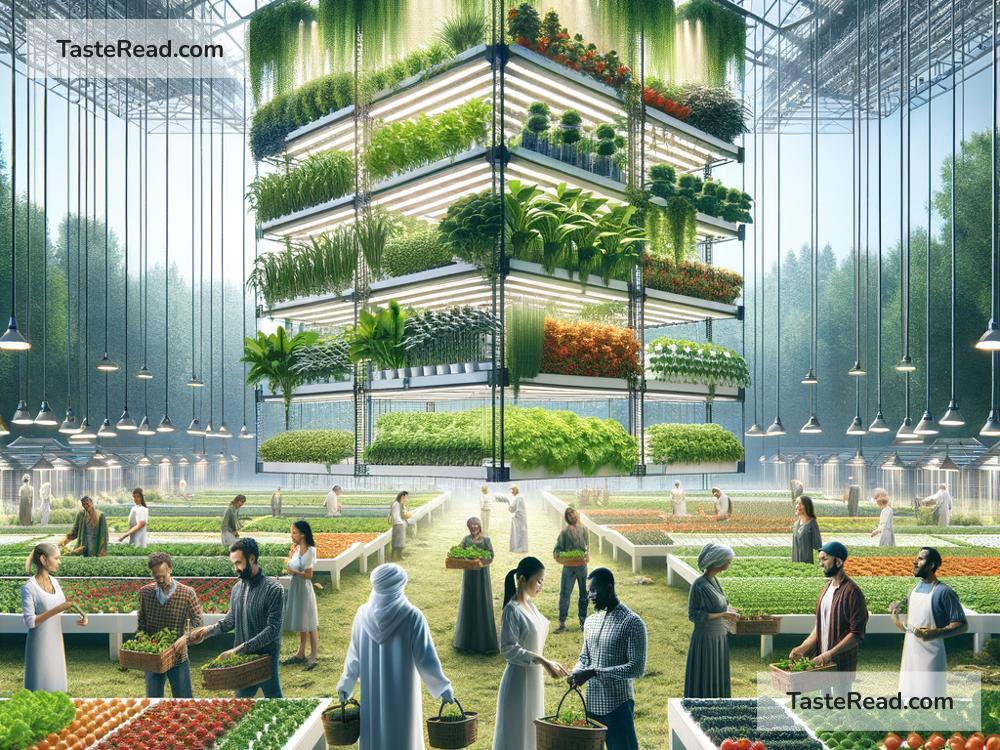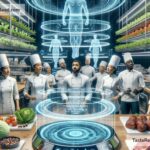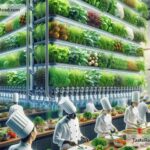The Future of Food and Participatory Global Models: A Vision for a Better Tomorrow
Food is one of humanity’s most basic needs. Every living person deserves access to nutritious, affordable, and sustainable food without harming the planet or depriving others. But as the global population grows, climate change impacts agriculture, and food systems become more complex, we must ask: What does the future of food look like? How can we work together to build solutions that ensure food security for everyone? Participatory global models might hold the key.
The Current Challenges in Food Systems
Before looking into the future, let’s first understand the challenges we face today:
-
Population Growth: The world’s population is predicted to reach 10 billion by 2050. Feeding everyone will be a big challenge unless we rethink how food is grown, distributed, and consumed.
-
Climate Change: Rising temperatures, droughts, floods, and unpredictable weather are already impacting farming. Some crops may no longer thrive in certain regions, which could lead to food shortages.
-
Waste: A third of all food produced globally is wasted—either thrown away before it reaches consumers or spoiled during transportation and storage. Meanwhile, millions of people go hungry every day.
-
Resource Depletion: Producing food often requires large amounts of water, soil nutrients, and energy, which are finite resources. Overuse of these resources can harm the planet, making food production unsustainable.
-
Inequality: While some countries produce excess food, others struggle with high hunger rates. Access to food remains unequal, and marginalized communities face the most challenges.
Understanding these problems is essential if we want to create solutions that benefit everyone.
The Future of Food: Innovations on the Horizon
The future of food is likely to look very different from what we know today. Innovations in agriculture, technology, and sustainability are paving the way for exciting possibilities:
-
Alternative Proteins: Advances in lab-grown meat and plant-based proteins like tofu, lentils, and mushroom-based products offer eco-friendly, ethical alternatives to traditional livestock farming. These technologies are expected to become more affordable and widely available.
-
Vertical Farming: Growing crops in stacked layers inside buildings—sometimes with the help of LED lights—is gaining popularity. Vertical farming uses less land and water than traditional methods, and it can produce food closer to cities, reducing transportation costs.
-
Precision Agriculture: Farmers are using data-driven tools, drones, and sensors to monitor soil, plants, and weather conditions. This helps them optimize water and fertilizer use, reduce waste, and grow healthier crops.
-
Food Waste Solutions: Companies and communities are developing ways to tackle food waste, such as turning leftovers into compost, improving packaging, or donating excess food to those in need.
-
Climate-Resilient Crops: Scientists are researching crops that can survive extreme conditions—such as drought-tolerant wheat or flood-resistant rice—to help maintain food supplies despite changing climates.
-
Fair Trade and Local Food Movements: Buying locally produced food and supporting fair trade practices ensure farmers are treated fairly, while reducing the environmental impact of long-distance transportation.
But innovation alone isn’t enough to fix our food systems. It requires collaboration—on a global scale.
Participatory Global Models: Working Together for Change
A participatory global model is about involving people from all walks of life—farmers, scientists, policymakers, companies, and communities—in designing better food systems. Everyone has a role to play, and the collective effort is what makes it powerful.
Here’s how participatory models can shape the future of food:
Inclusion of All Voices
Traditionally, food policies are often decided by governments and corporations, but the people most affected—farmers, small business owners, and consumers—are left out of the conversation. Participatory models invite everyone to share ideas, knowledge, and concerns. Farmers can share wisdom from decades of experience, scientists can offer technical solutions, and communities can highlight what works best for them. Together, these groups can come up with fair and effective plans.
Global Networks of Sharing
Food security is often seen as a local issue, but it’s deeply connected to global events like trade policies, wars, and climate change. Participatory models create networks where countries help each other—sharing knowledge, seeds, technologies, and even excess food. If one region suffers from drought, another region with surplus crops can step in.
Education and Empowerment
Teaching people about sustainable farming practices, nutrition, and the impacts of food choices empowers them to make informed decisions. Participatory models use education as a tool to create change, encouraging communities to grow their own food, reduce waste, and support eco-friendly businesses.
Innovation Hubs
Collaborative spaces for research and experimentation can make food innovation more accessible to everyone. Governments, universities, and private companies can fund these hubs, allowing farmers and communities to test new ideas, such as new crop varieties or water-efficient methods, without fear of failing.
Monitoring and Accountability
Participatory models also involve holding large corporations accountable for fair treatment of workers, ethical sourcing, and environmental protection. Transparency builds trust among stakeholders.
What Can You Do?
Participatory global models depend on individuals like you to succeed. You may think solving food issues sounds daunting, but small actions make a big difference over time. Educate yourself about local food systems. Support sustainable brands. Reduce food waste at home. Join community gardens or local food initiatives. Advocate for fair policies.
When we work together at all levels—local, national, and global—we’re more likely to create a food system that works for both people and the planet. The future of food is in our hands, and by choosing collaboration and innovation, we can ensure it’s a healthier, fairer, and more sustainable future for all.


